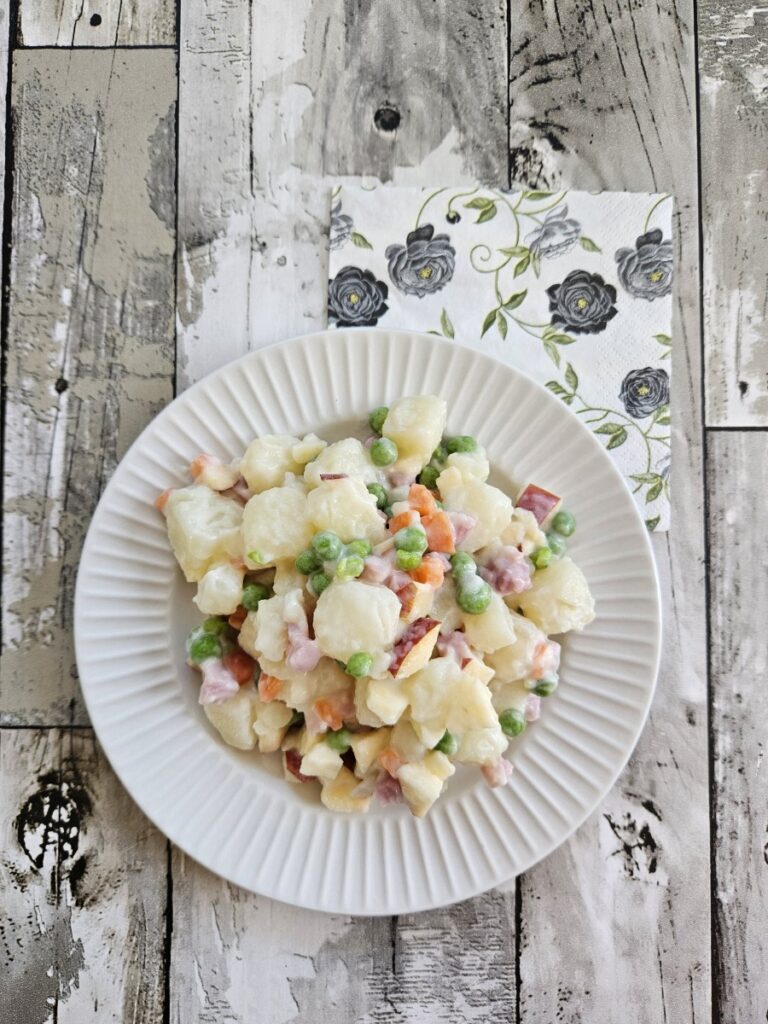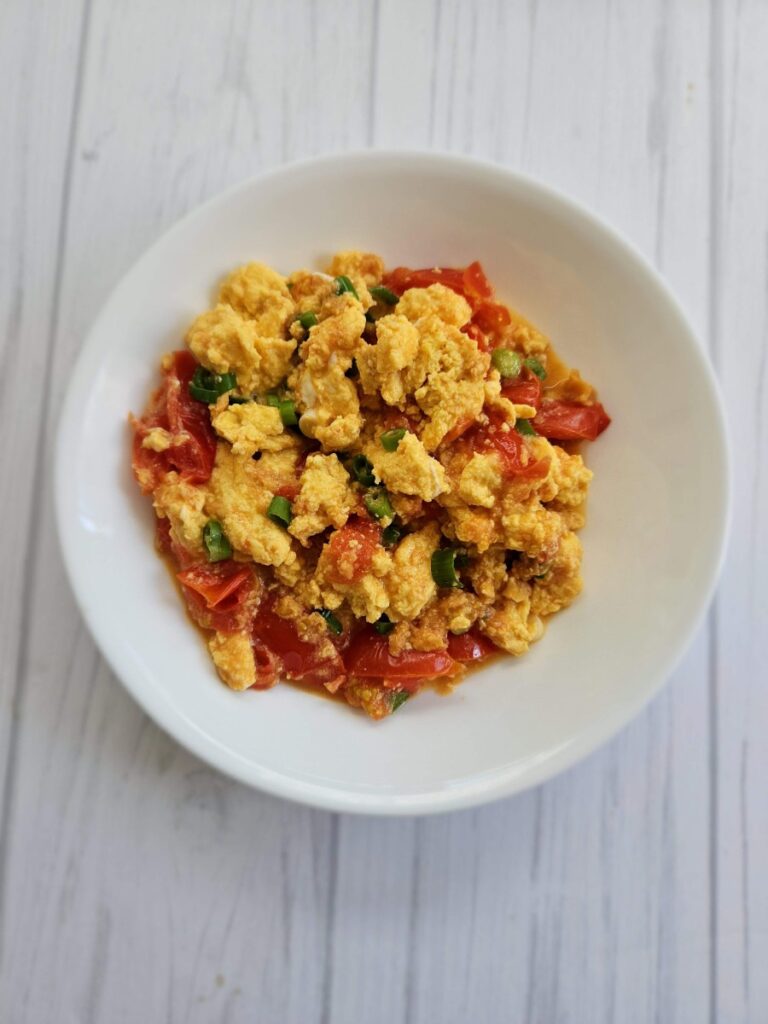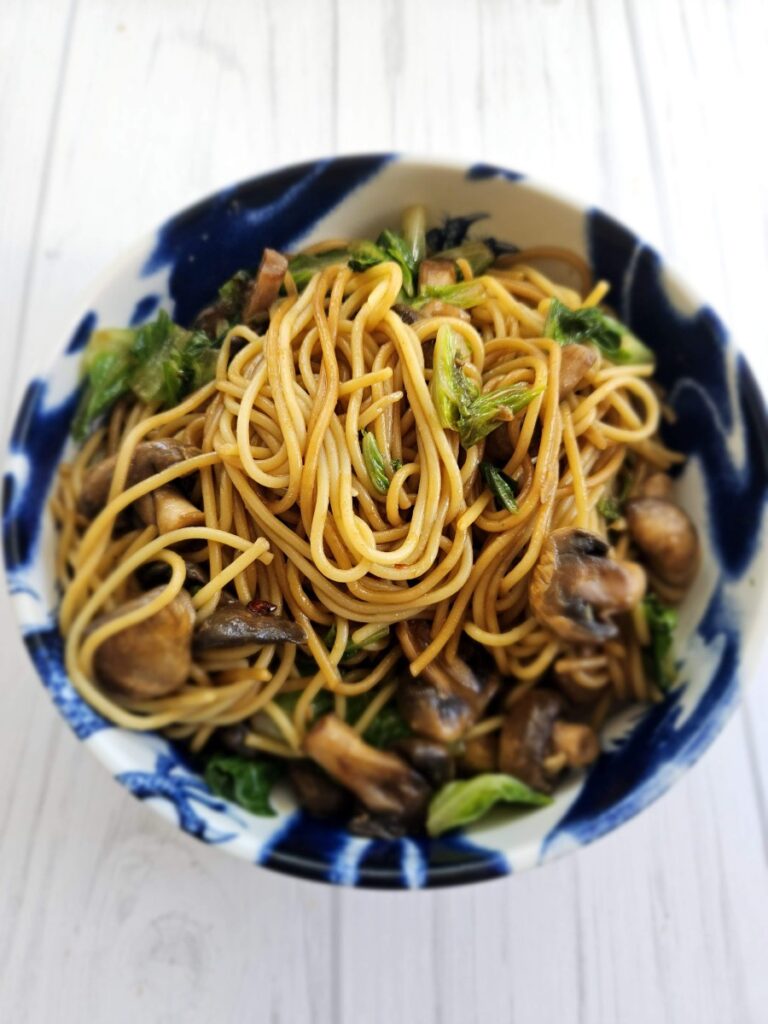This is not a new book (it was published in 2022) but it was new to me when I received it recently as a gift. Many of you will be aware of the Leung family via the Woks of Life blog they began in 2013. Within a few years it had garnered a following of millions and today it is recognized as a leading online authority on Chinese cooking in the English language.
The Leungs’ blog is unique in that it is a multi-generational undertaking rooted in one family’s American immigrant story. Judy Leung was born in China and emigrated to the US with her family in 1983. Bill Leung was born in New York to another Chinese immigrant family. Their children Sarah and Kaitlin were born in America in the early 1990s.
Despite their different ages, origin stories and life experience, the Leungs have remained connected by their love of cooking and eating together. Each member of the family brings a different perspective to the blog (and book). Judy has a passion for regional Chinese foodways and preserving the traditions she grew up with. Bill, who grew up cooking in his family’s Chinese restaurant, brings a wealth of practical experience to the kitchen. Kaitlin and Sarah, both of whom learned to cook by their parents’ side then experienced the limitations of cooking in a college dorm, bring a modern sensibility (and some clever hacks that will resonate with time-challenged cooks) to the project.
Following an engaging Introduction “Stuck with Each Other” the book is divided into eleven chapters based on either ingredient (Rice, Noodles, Fish & Shellfish etc) or type of dish (Dim Sum, Soups & Stocks, Sauces etc). Front and back matter cover tools, ingredients, key techniques and pantry supplies. The food styling and photography by Sarah and Kaitlin are a visual feast, with nearly all recipes illustrated with mouthwatering images. (The photos included here are mine and not representative). Recipes are very detailed and easy enough for even novice cooks to follow, with process photos included for some tasks that may be unfamiliar (prepping crabs and lobster, pleating dumplings). Dishes range in complexity from simple salads, stir-fries and noodles to more challenging recipes that experienced cooks will enjoy, such as bamboo leaf-wrapped Cantonese dumplings (zongzi), and a classic Chinese roast duck that calls for inflating the bird’s skin with an electric air pump. For the curious (and digitally literate), QR codes link to further online resources. Interspersed throughout the book are essays from each family member reflecting on the different aspects of their own Chinese-American experience.
On to the cooking.
Old Shanghai Potato Salad, we learn, is an example of Haipai cuisine, a hybrid that developed in Shanghai in the early twentieth century, when Western influences considered fashionable. According to Judy Leung, her aunt’s handwritten recipe calls for the addition of vanilla ice cream, mercifully omitted here. I found this riff on the classic Russian Salad creamy and comforting, if a little bland. A generous grinding of black pepper helped pick it up.

Tomato Egg Stir-Fry is a Chinese family favourite, and its easy to see why. It’s a cinch to make and with a little toasted sesame oil, Shaoxing wine and white pepper whisked into the eggs, very savoury. I served it over rice; Judy enjoys a noodle soup version as a weekday lunch.

A number of recipes call for Shaoxing wine, which has a mild, slightly sweet flavour. It isn’t readily available outside of Asian supermarkets, and while they are not covered in the book, substitutes are discussed on the Leungs’ blog. The most common of these is dry sherry. In recipes that call for only a small quantity (less than a teaspoon), I have used sherry vinegar in a pinch.
I diverged from the recipe for Garlic Fried Chicken Wings by cooking them in a Ninja Air Fryer instead of deep frying them. They emerged with the meat moist and flavourful, with a garlic-flecked crust beautifully crispy. And no messy oil to clean up.
Lazy Veggie Noodles, contributed by Kaitlin (self-described kitchen slacker), is a snap to pull together and extremely tasty. In the spirit of innovation (a clever hack), any kind of noodle (even spaghetti) can be used, plus any kind of mushroom and leafy green. Tossed with a lip-smacking soy/sesame/butter sauce, it packs a powerful dose of umami. I used spaghetti, and as long as you cook it al dente so it retains some bite, it is indistinguishable from Asian noodles in the finished dish. For leafy greens, I used the outer leaves and coarse tops of a romaine lettuce, parts that usually get thrown away. (Some notes here — the portion size, a pound of noodles to serve 4-6, might be appropriate for hungry college students, but a standard portion is two ounces of dry pasta per person. There is no instruction to chop or cut the mushrooms. I used buttons and halved them. The recipe calls for a tablespoon of Ultimate Chili Oil, a sub recipe involving several specialist ingredients. With the Leung’s blessing, I used a store-bought chili oil).

The Leungs promise that Hand-Torn Cabbage Stir-Fry will be scrumptious – and it is. Made in mere minutes, cabbage emerges from the pan lightly cloaked in a flavoursome oyster sauce, flecked with fragrant and spicy dried Sichuan chilies. Thinly sliced pork shoulder is an optional addition. I substituted bacon, a riff I can recommend.
Next came Homestyle Tofu, a saucy dish that pairs pan fried tofu with bell peppers, scallions and wood ear mushrooms. The latter are there primarily to provide texture and don’t have a lot of flavour. I didn’t have any at hand and I thought the dish was fine without them.
Technique is hugely important in Chinese cooking. You’ll see Beef and Broccoli on almost every Chinese restaurant menu but if you have ever tried to make this seemingly simple dish at home, you will know that it is difficult to get the various elements (broccoli, beef, sauce, rice) just right. Bill’s recipe, born of many years cooking in Chinese restaurants, shows how each step of the preparation and cooking contributes to the finished dish, and I aced it. The beef was tender but toothsome, the broccoli perfectly al dente and the sauce savoury, glossy and with just the right degree of viscosity.
My rendition of Kung Pao Chicken was equally successful thanks to precise instructions for achieving the all-important “interplay of flavours and textures.”
This attention to detail carries through all recipes in the book. The instructions for my final dish, Steamed Eggs with Chicken & Oyster Mushrooms, were to steam the eggs for three minutes, then allow them to stand for (“exactly!”) 14 minutes, until the eggs “wobble like Jello when you shake the bowl.” The soft, custardy eggs are topped with a nubbly mixture of chicken and mushrooms, richly flavoured with ginger, soy sauce and Shaoxing wine. It’s a lovely, comforting dish with a contrast of textures and tastes.
Given the success of the numerous dishes I cooked, I am confident that every one of the of the 100-odd recipes in this collection will turn out well. And while I do own a wok, I wasn’t in my own kitchen when testing these recipes. When very high heat was needed to quickly sear ingredients, I used a cast iron skillet; the rest of the cooking was done in a deep skillet. A wok is the tool of choice for certain dishes that benefit from the savoury flavour known as “wok hei” but as the Leungs point out, you’re not trying for wok hei in every dish.
Not every cooking blog translates well into the tighter format of a cookbook but The Woks of Life makes the transition well, retaining the conversational style and multigenerational voices of the blog, while delivering expertly written recipes with concise but informative headnotes.
In a reversal of the usual reader’s journey from digital site to cookbook purchase, I became a fan of The Woks of Life blog after discovering the pleasure of cooking with the Leungs via the printed page. I’m happy knowing that I can continue the journey online. As a matter of fact, Instant Pot Pork Belly, a recipe from the blog, is bubbling way in my kitchen as I write.


